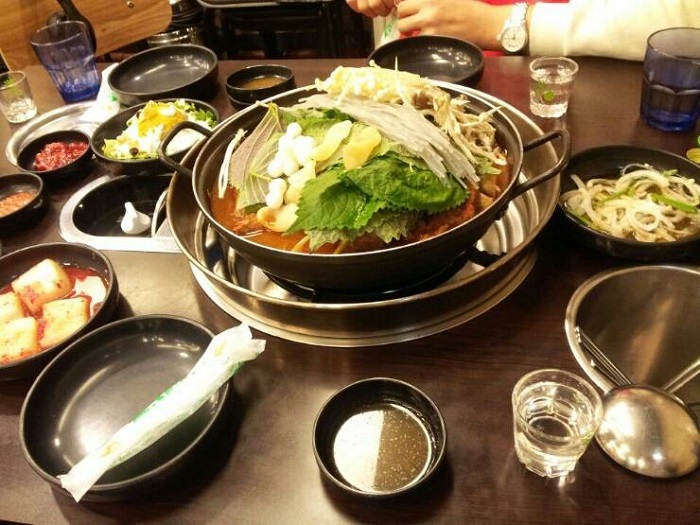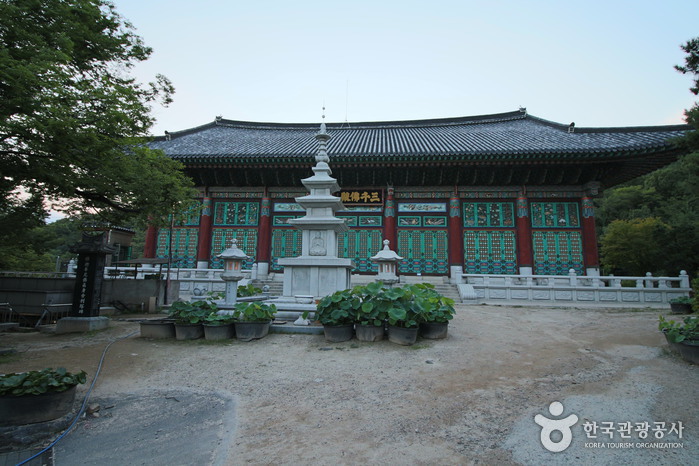Butter - COMMON GROUND Branch [Tax Refund Shop] (버터 건대커먼그라운드)
14.8Km 2024-04-22
Store #2-2, Block MH, 200, Achasan-ro, Gwangjin-gu, Seoul
-
Outstanding & Co - COMMON GROUND Branch [Tax Refund Shop] (아웃스탠딩 건대커먼그라운드)
14.8Km 2024-04-18
Bldg. MH 1F, 200, Achasan-ro, Gwangjin-gu, Seoul
-
Frizmworks - COMMON GROUND Branch [Tax Refund Shop] (프리즘웍스 건대커먼그라운드)
14.8Km 2024-04-22
2F, 200, Achasan-ro, Gwangjin-gu, Seoul
-
Vans - COMMON GROUND Branch [Tax Refund Shop] (반스 건대커먼그라운드)
14.8Km 2024-04-16
200, Achasan-ro, Gwangjin-gu, Seoul
-
Olive Young - COMMON GROUND Branch [Tax Refund Shop] (올리브영 건대커먼그라운드점)
14.8Km 2024-06-26
200, Achasan-ro, Gwangjin-gu, Seoul
-
Dopgamjatang (돕감자탕)
14.9Km 2021-03-27
9, Achasan-ro 31-gil, Gwangjin-gu, Seoul
+82-2-499-2838
It is a hidden restaurant near Konkuk University. This Korean dishes restaurant is located in Gwangjin-gu, Seoul. The most famous menu is pork back-bone stew.
Olive Young - Gwangnaru Station Branch [Tax Refund Shop] (올리브영 광나루역)
14.9Km 2024-04-18
1F, 607, Achasan-ro, Gwangjin-gu, Seoul
-
Bongwonsa Temple (봉원사)
14.9Km 2023-03-13
120, Bongwonsa-gil, Seodaemun-gu, Seoul
+82-2-392-3007
Located on the outskirts of Ansan Mountain in Bongwon-dong, Seodaemun-gu, Seoul, Bongwonsa Temple, as the center of Korean Buddhism Taego, is a thousand-year-old temple with a long history and tradition. In 889 (3rd year of Shilla Queen Jinseong’s reign), Monk Doseon founded it at the ground of Yeonhui Palace (now Yonsei Univ.) and named it Banyasa temple. It was destroyed during the Imjin War in 1592, and later in 1748 (the 24th year of Joseon King Yeongjo’s reign), it was rebuilt and renamed “Bongwonsa” by two Buddhist monks, Chanjeup and Jeungam.
“Yeongsanjae,” one of the Buddhist rituals and also a National Intangible Cultural Property, takes place at Bongwonsa on June 6 every year wishing for world peace and the reunification of North and South Korea. It was designated as one of the Intangible Cultural Heritage of Humanity by UNESCO in 2009. During Yeongsanjae, visitors can enjoy the Buddhist arts such as Beompae (Buddhist temple music for rituals) and dancing. Also, during summertime, Seoul Lotus Flower Culture Festival takes place, where visitors can enjoy the beautiful lotus flowers which are a symbol of Buddhism.
Solb - Konkuk Univ. Branch [Tax Refund Shop] (솔브 건대)
14.9Km 2024-04-17
1F, 115, Neungdong-ro, Gwangjin-gu, Seoul
-
Baekbeom Kim Koo Statue (Baekbeom Plaza) (백범김구선생상(백범 광장))
14.9Km 2024-10-22
Hoehyeon-dong, Jung-gu, Seoul
Baekbeom Kim Koo Statue is located in Baekbeom Plaza in Namsan Park, Seoul. Erected in August 1969, the statue stands at a x_height of 10 meters. It commemorates the patriotic spirit of Kim Koo, who was both an independence activist and a politician in South Korea. During the Japanese colonial period, he actively participated in anti-Japanese movements, and after liberation, he played a leading role in the establishment of the government of the Republic of Korea.
![Butter - COMMON GROUND Branch [Tax Refund Shop] (버터 건대커먼그라운드)](http://tong.visitkorea.or.kr/cms/resource/45/2878845_image2_1.jpg)
![Outstanding & Co - COMMON GROUND Branch [Tax Refund Shop] (아웃스탠딩 건대커먼그라운드)](http://tong.visitkorea.or.kr/cms/resource/46/2878846_image2_1.jpg)
![Frizmworks - COMMON GROUND Branch [Tax Refund Shop] (프리즘웍스 건대커먼그라운드)](http://tong.visitkorea.or.kr/cms/resource/47/2878847_image2_1.jpg)
![Vans - COMMON GROUND Branch [Tax Refund Shop] (반스 건대커먼그라운드)](http://tong.visitkorea.or.kr/cms/resource/48/2878848_image2_1.jpg)


![Olive Young - Gwangnaru Station Branch [Tax Refund Shop] (올리브영 광나루역)](http://tong.visitkorea.or.kr/cms/resource/92/2878792_image2_1.jpg)

![Solb - Konkuk Univ. Branch [Tax Refund Shop] (솔브 건대)](http://tong.visitkorea.or.kr/cms/resource/99/2878799_image2_1.jpg)
 English
English
 한국어
한국어 日本語
日本語 中文(简体)
中文(简体) Deutsch
Deutsch Français
Français Español
Español Русский
Русский